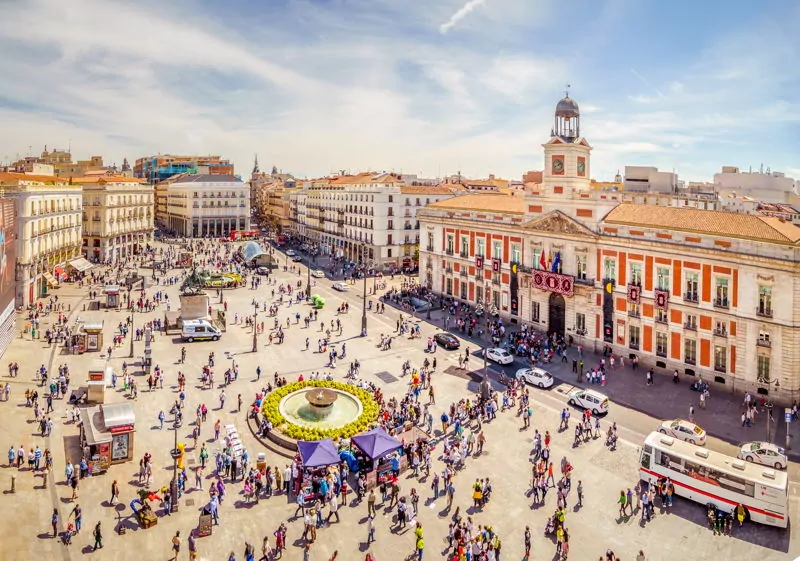Two years ago, we moved our four kids to school in Tramore, a coastal town in Ireland’s “sunny southeast” (which I introduced you to last week). Now that they’ve established friendships (and hear talk of melted chocolate donuts in the holiday shops), they’ve been asking, at least once a week, when we can move there.
Tramore holds so much lifestyle appeal… not to mention the wide Atlantic views. But I still can’t get over the fact that, two months of the year, I’d have to share it all with throngs of visitors…
I drove there every day last week for summer camp and the traffic by the beach was at a crawl. Circus Gerbola had barely packed up its last performing goose when in rolled the Circus Vegas brigade.
Could I survive these two peak months every year with the knowledge that everything settles back down to normal?
Spending time on the north coast of Spain last month put this in some perspective. Ireland’s tourist industry is relatively small and the season short. We’re not talking the crowds of Costa del Sol… the Cote d’Azur… or Cancún.
Still, no matter how long the season, living in a tourism area in any corner of the world can be challenging. Yet it also has its advantages.
Today let’s look at both sides of the coin…
The Downsides Of Living In A High-Tourism Area
1. Lack of community:
Tourism areas often just don’t have the same community feel as a normal residential setting. Since many expats stand out as foreigners when living abroad—and tourism areas have high numbers of foreigners anyway—you often feel like you’re being treated as a tourist rather than a local resident who is part of the community.
2. It’s hard to integrate:
In tourism areas it can be hard to integrate with the local culture and people since the local residents often place you in the “tourist” camp (or expat camp) rather than the local camp.
3. Higher costs and gringo pricing:
As an expat living in a tourist area, it’s hard to exempt yourself from the pricing practices that tourists usually fall victim to—this is especially true in developing countries.
4. The “Disneyland effect”:
The tourist areas of any given country often don’t reflect the genuine character of the country. Instead you get a caricature of the country, one designed to attract visitors.
5. Tourist annoyances:
High-tourism areas often come with tourist annoyances, such as a constant stream of vendors, tour guides, scammers, and even beggars.
There may also be issues with crowds themselves bringing noise and traffic while taking up valuable space in your favorite parking lot or restaurant.
There’s no doubt that these things can be bothersome. But high-tourism areas also bring benefits… benefits that you’ll appreciate.
The Advantages Of Tourism Areas May Outweigh The Annoyances
1. The community amenities:
Tourism areas usually have more than their share of nice restaurants, cafés, and entertainment. Depending on where you position yourself, you may have everything within walking distance and save yourself the expense and hassle of keeping a car.
2. Care of infrastructure:
Tourist sectors usually have the best maintained roads, sidewalks, trails, and beaches. In many resorts, especially during high season, you have crews who clean the boardwalk streets and beaches every morning.
3. Lack of obvious poverty:
Obvious poverty can be a downside in poor countries, but in tourist areas you’ll often see far less of it. One reason is that these areas bring local jobs… the other reason is that local officials often make efforts to keep panhandlers and homeless people away from the high-tourist sectors.
4. Better flight connections:
Areas with high-tourist traffic often have convenient ways to get there, such as frequent nearby flights or good public transportation.
5. Rental income and resale:
Many tourist areas offer the opportunity for good rental returns due to the increased traffic. They can also provide you with more liquidity at re-sale time.
6. More English spoken:
English is the primary international language, so if it’s the only language you speak, you’ll generally be better off in an area with lots of tourists or expats.
7. More conveniences:
At resort towns, you’re more likely to have easy access to ATMs and bank branches, as well as North American franchise stores and North American products.
8. Better construction options:
High-tourism or expat areas often bring better options for living than the local market would otherwise demand. So you’ll find more high-end condos, for example, built to First World standards.
But this can cut both ways. Sometimes high-tourist areas bring mass-market, low-end, bargain construction that represents a poor value.
9. Finally, great local intrinsic attributes:
Tourists don’t come just to hang out with other tourists… they come because the area has something good to offer. This can include beautiful beaches, perfect weather, scenic mountains, or classic old cities.
Whatever brought the tourists in the first place is something that you may enjoy, too.
A High Concentration Of Expats May Produce The Same Effect As Tourists
Be honest with yourself about whether you’re using your overseas home full-time, part-year, or as a vacation getaway.
If you’re spending one month at a time abroad, you’ll enjoy the tourist areas’ amenities, and the annoyances won’t have time to wear on you. Long-term residents, however, will appreciate the non-tourist areas’ community feel and local culture long after the novelty of the tourist amenities have worn off.
Bottom line, buying in a tourism area will bring you some valuable amenities… but it usually comes at a price.
Lynn Mulvihill

